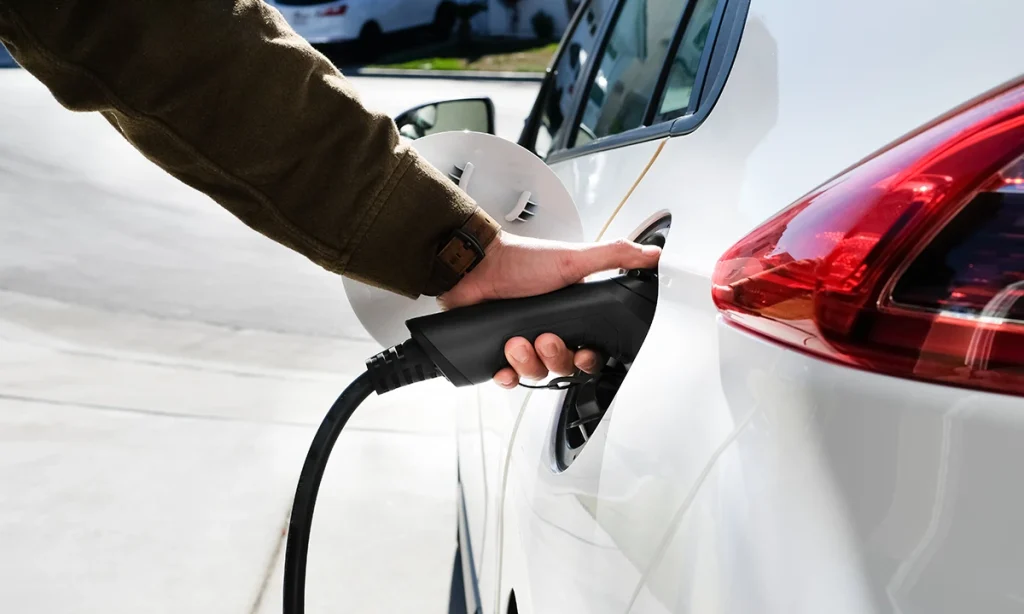The push for electric vehicle (EV) adoption is gaining momentum as consumers show increasing interest, automakers make significant investments, and governments allocate substantial funding. The 2021 Infrastructure Investment and Jobs Act injected $7.5 billion into EV charging infrastructure, boosting electric transportation.
Furthermore, California made headlines by announcing its plan to prohibit the sale of new internal combustion engine-powered vehicles by 2035. These developments highlight the growing commitment towards accelerating the transition to cleaner transportation options.
Current State Of EV Charging Infrastructure
The current state of electric vehicle charging infrastructure in the United States varies significantly from region to region. While some areas have an extensive charging station network, others still lack sufficient coverage. This disparity poses challenges for potential EV owners who rely on readily available charging options for their daily commutes or long-distance travel.
According to data from the US Department of Energy’s Alternative Fuels Data Center, there are over 48,000 public electric vehicle charging stations across America. However, it is important to note that these numbers include different types and levels of chargers – ranging from Level 1 (household outlets) to DC fast chargers (high-power commercial installations).
The Outlook for EV-charging Infrastructure in the US
The electrification of transportation has prompted important questions about the pace at which charging infrastructure can be developed to support the expected surge in EV adoption adequately. If this infrastructure can be built effectively, how and where will America establish its charging network? Additionally, businesses seeking to enter the EV charging market need guidance on the best entry points and strategies for success.
A recent analysis by PwC highlights that the EV charging market must expand nearly tenfold by 2030 to meet the demands of an estimated 27 million EVs on US roads. Constructing a national charging network poses challenges that require collaboration among various stakeholders and significant investments. However, it is necessary to determine the feasibility and viability of widespread electric vehicular transport in the country.
Addressing these challenges necessitates careful planning and coordination. Establishing strategic partnerships between public entities, private companies, utilities, and other key players becomes crucial for expediting infrastructure development. These collaborations enable leveraging expertise, resources, and funding required for rapid deployment.
Identifying optimal locations for charging stations involves analyzing high-demand areas such as major highways, urban centres, workplaces, and shopping malls, ensuring convenient access across diverse regions. Prioritizing these locations maximizes utilization while meeting growing demand effectively.
Why Electric Car Charging Stations are Important
Electric car charging stations play a crucial role in the EV ecosystem, offering practicality and convenience to electric vehicle owners. These stations create a network that enables seamless long-distance travel and recharging for EVs.
Convenience: The availability of charging stations eliminates concerns about running out of power while on the road. Drivers can easily locate nearby stations to recharge their vehicles, ensuring they can continue their journeys without interruption.
Cost Savings: Charging an electric car is significantly more cost-effective compared to filling it up with gasoline. With the average cost of electricity at around 13 cents per kilowatt-hour in the US and gasoline prices averaging $2.50 per gallon, EV owners enjoy substantial savings on fuel costs throughout the lifetime of their vehicles.
Environmental Benefits: Electric cars produce zero emissions during operation, making them an environmentally friendly alternative to traditional gas-powered vehicles. By promoting the widespread adoption of EVs, charging stations reduce carbon emissions from the transportation sector and help combat climate change.
Role of Charging Stations in Driving Mass Adoption of EVs
The role of charging stations in driving the mass adoption of electric vehicles (EVs) cannot be overstated. As the availability of charging infrastructure continues to expand, it has played a significant role in the rapid growth of the EV market. Here are some key points highlighting how charging stations contribute to the mass adoption of EVs:
Reducing Range Anxiety: One major barrier for potential EV owners is range anxiety – the fear of running out of battery power without access to a charging station. By increasing the number and accessibility of charging stations, drivers feel more confident about their EV’s range and are more likely to make the switch.
Boosting EV Sales: Public charging stations make owning an electric vehicle more appealing and accessible to a wider consumer base. This increased convenience encourages higher sales and market share for EV manufacturers as they cater to growing demand.
Environmental Impact: Mass adoption of electric vehicles will have positive environmental implications by reducing greenhouse gas emissions and air pollution associated with traditional gasoline-powered cars. Charging stations support this transition by enabling the widespread use of clean energy transportation options.
Job Creation: Expanding and maintaining charging infrastructure creates employment opportunities within the green energy sector. This development supports economic growth and contributes towards building a sustainable workforce focused on renewable technologies.
Final Thoughts
The future of electric vehicles hinges on the widespread installation of EV charging stations across the US. These charging stations are not just a convenience but a catalyst for driving mass adoption of electric cars. By alleviating range anxiety and providing convenient access to power, these stations make owning an EV more practical and appealing to consumers.
But it’s not just about practicality – it’s about seizing opportunities. The growth of charging infrastructure opens up new economic avenues, creating jobs in the installation, maintenance, and operation industries. It also fosters innovation as businesses compete to develop faster and more efficient charging technologies.
Beyond economics, EV charging stations have profound environmental implications. They enable us to reduce our dependence on fossil fuels and slash greenhouse gas emissions contributing to climate change. With each car charged at a station instead of guzzling gasoline at a pump, we take another step towards cleaner air and a healthier planet.
Together, let’s shape a future where EVs reign supreme on our roads – powered by an extensive network of vibrant and accessible charging stations.


